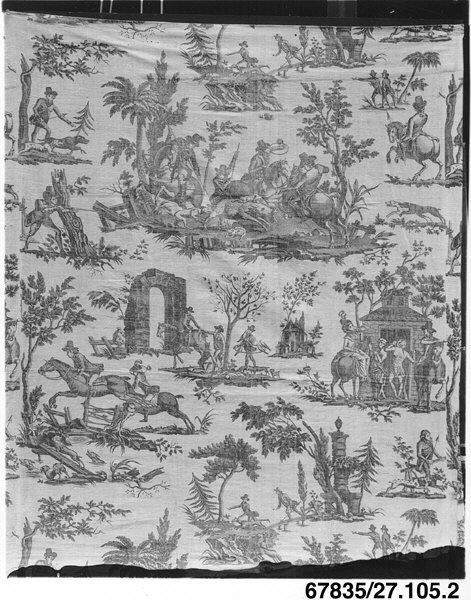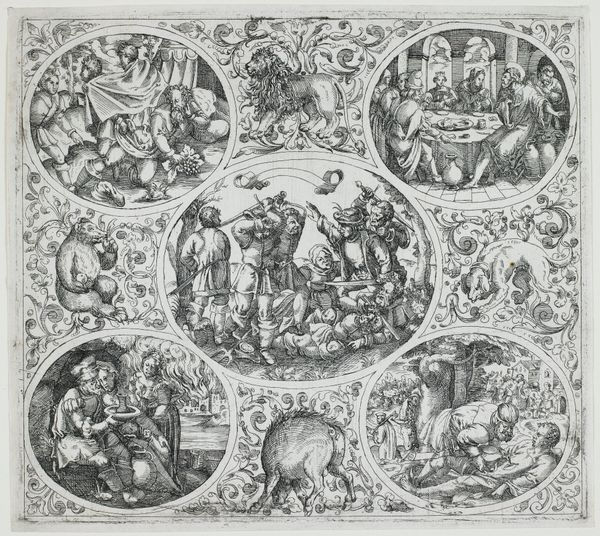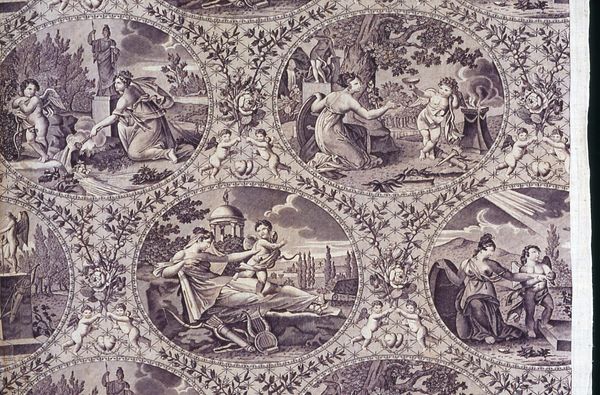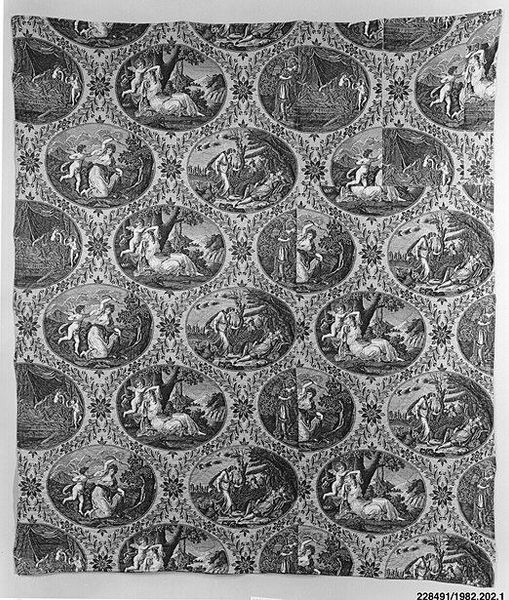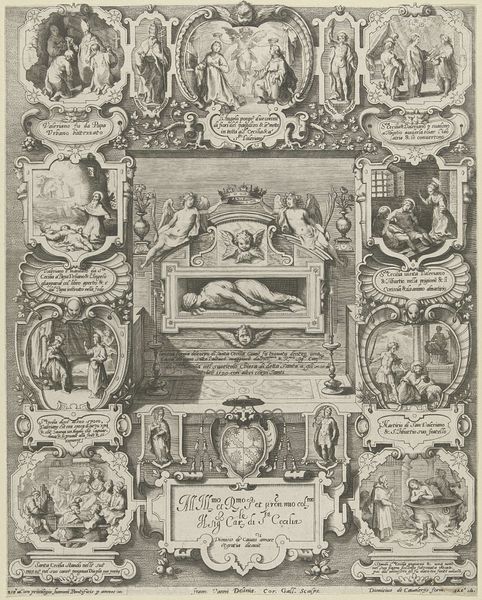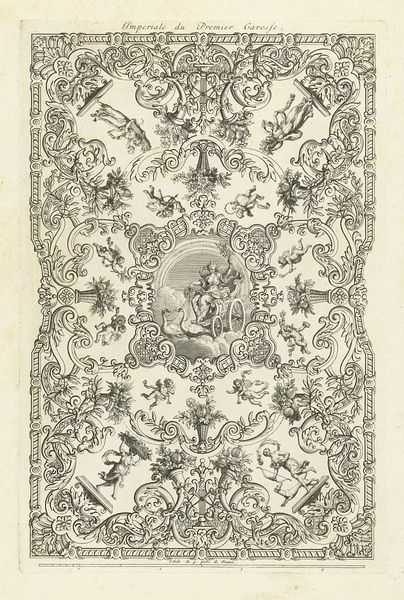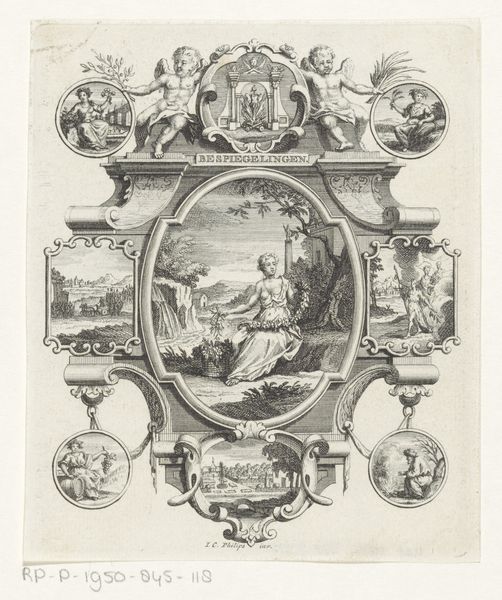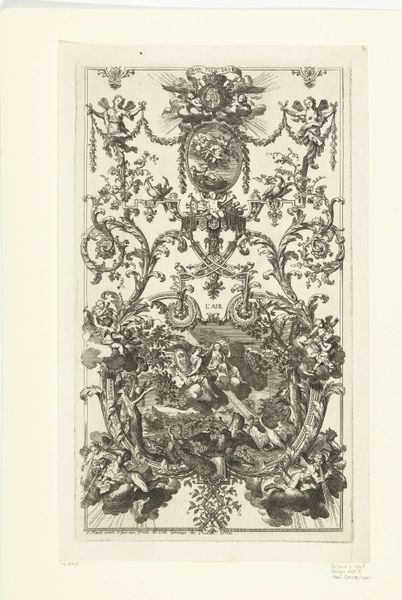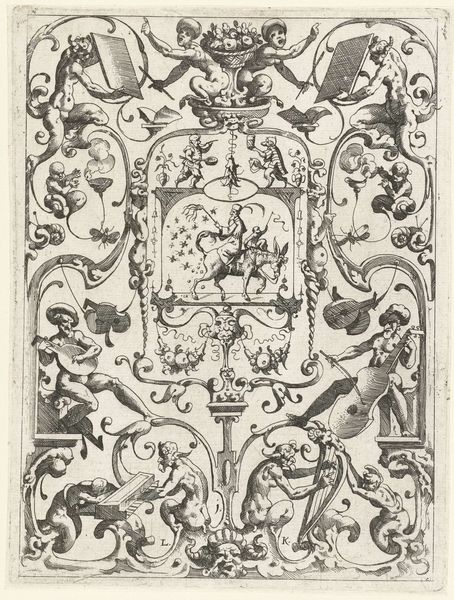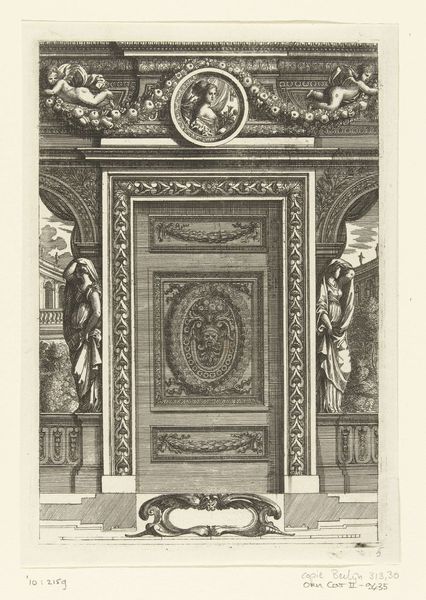
Les Monuments de Grèce (Furnishing Fabric) 1800 - 1810
0:00
0:00
print, etching, weaving, textile, engraving
#
neoclacissism
# print
#
etching
#
weaving
#
landscape
#
textile
#
decorative-art
#
engraving
Dimensions: 244.9 × 84.4 cm (96 3/8 × 33 1/4 in.) Warp repeat: 23.8 cm (9 3/8 in.)
Copyright: Public Domain
This furnishing fabric, titled ‘Les Monuments de Grèce’, was made at the Oberkampf Manufactory in France between 1760 and 1843. It is made of cotton, block-printed with a mordant dye. The mordant process is critical here. The fabric would first be treated with a metallic salt – the mordant – and then dyed. The dye adheres only where the mordant has been applied, allowing for detailed patterns. Look closely, and you can see the fine lines that define the classical monuments and portrait medallions. This precision was achieved through skilled hand-carving of the woodblocks used to apply the mordant. The production of textiles like this was a complex industrial process, involving designers, skilled block cutters, dyers, and a large workforce of textile printers. The scale of production and the division of labor reflect the rise of industrial capitalism. Considering the materials, making, and social context of this fabric helps us understand its full meaning, and challenges traditional distinctions between fine art and craft.
Comments
No comments
Be the first to comment and join the conversation on the ultimate creative platform.
